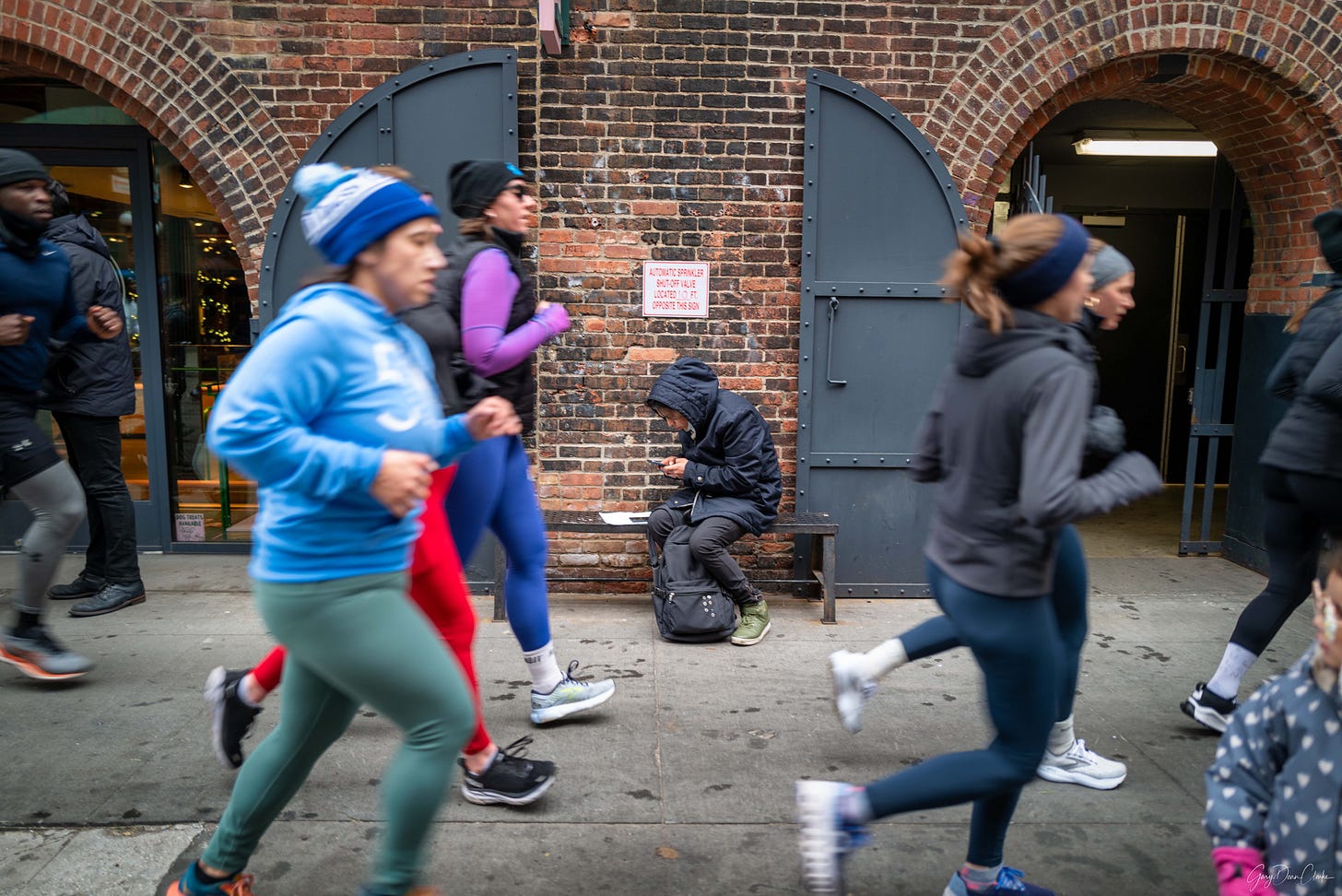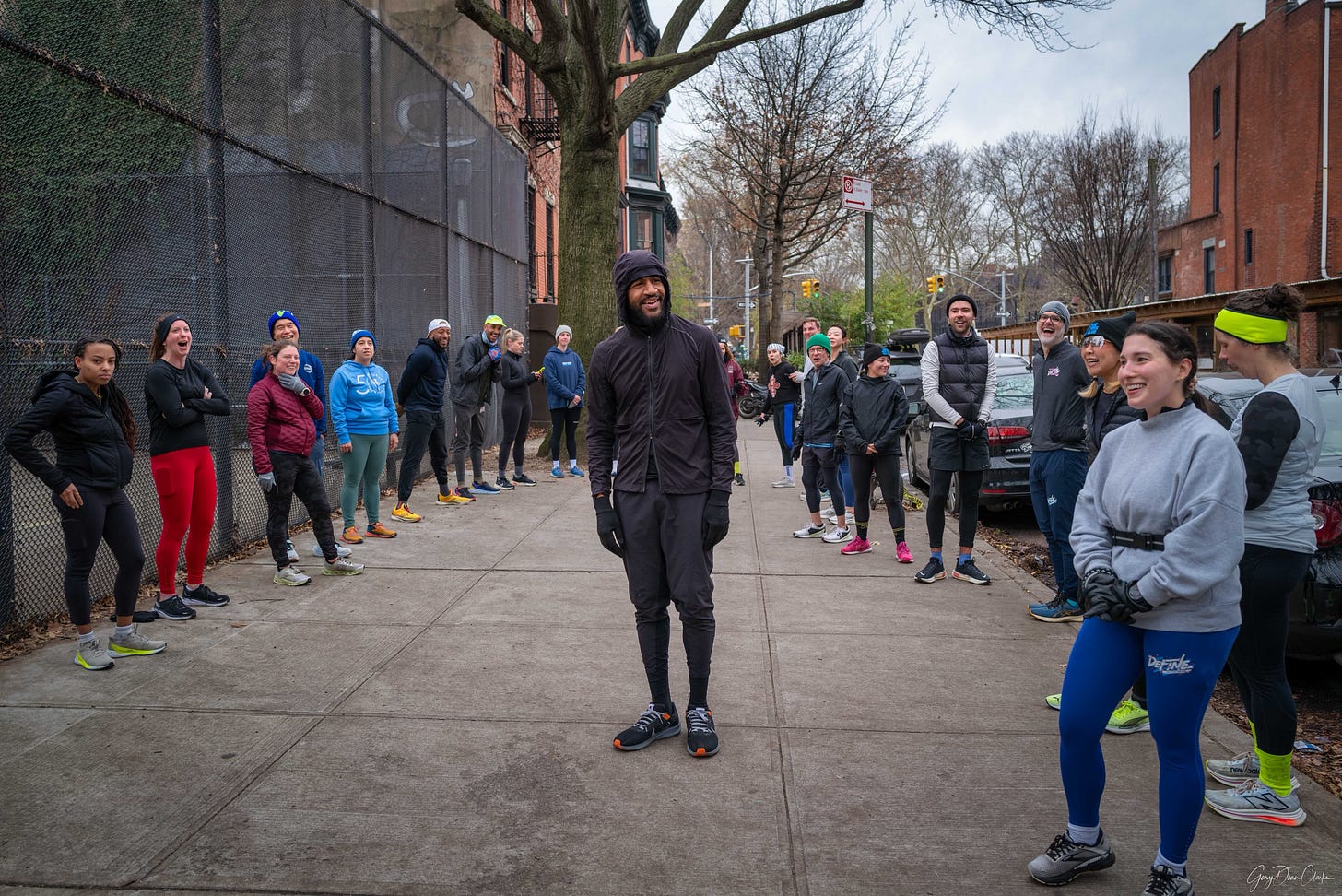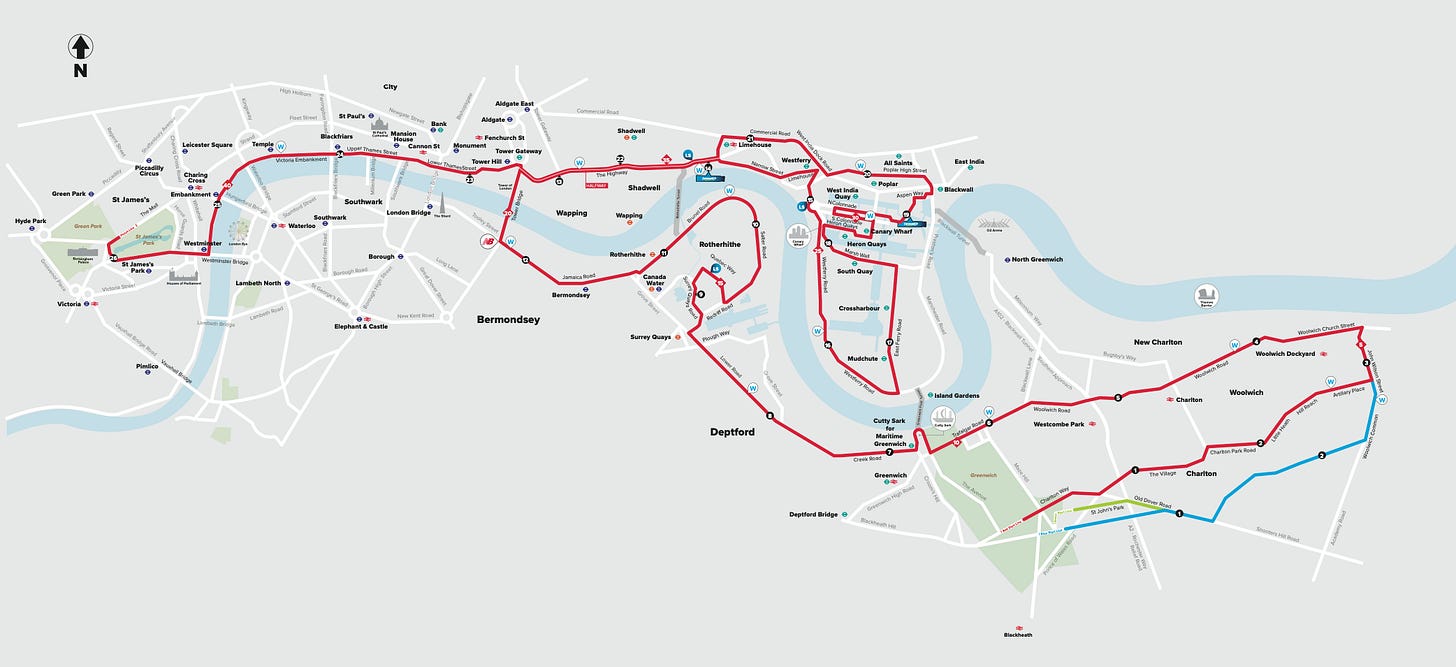Let's build a base
14 weeks 'til London
Good morning, Team!
I love spring marathoners—you winter runners are a special breed. Maybe you love the grind of these months, when your footsteps echo in the empty streets and your body steams in the streetlights. Maybe you get in your miles, no matter the weather, because you know it’ll make the rest of the day a little brighter. Maybe you like the gonzo feel of meeting up with buddies and running around the city in your skivvies while reasonable people sleep in. Traditionally, this is the time of year when elite runners put in their base miles. On dark mornings I like to remember this; the track athletes I’ll watch in the Olympics this summer are, right now, running miles very much like mine.
Whatever your reason for facing the elements, know that you have fans. When I ask new runners what got them excited about running, the #1 answer is watching the NYC Marathon, and the #2 answer is seeing runners in their neighborhood and thinking….why not me? It makes me so happy to think of you out there, chasing your own “why” and leaving ripples as you go.

OK, to the marathons!
You have 7 weeks until Tokyo, 13 weeks until 26.true and Boston, 14 weeks until London, and 15 weeks until Big Sur. Others of you are running Barcelona, LA, Jersey City, and St. Louis, and I’m sure more will come out of the woodwork.
This season, Coach + Coffey will target the London Marathon in our emails, very simply because we have more athletes running there than anywhere else. But, we intend to make these emails useful to more broadly. Lots of the info contained within will apply to running more generally, and we’ll include tips for altering the plan to fit your needs.
London Marathoners,
14 weeks to go! If you’re a few weeks into training, great. If you’re just starting, also great. The standard for a marathon build is 16 weeks, but I write plans for 20-12 weeks, so don’t feel behind. You’re not.
With 14 weeks to go, everyone is in base-building phase. That means our priority is getting in the miles and varying the pace—simple. Exact pace isn’t important. Getting 100% of every workout right isn’t important. What is important is setting up habits that will support you for the length of your marathon journey:
When will you run? Block out the time. With whom? Text them and confirm they’re in. Are you set with cold-weather gear? Gloves + hat + layers make all the difference. Can you prep dinner/breakfast to be ready when you get home with frozen fingers?
Oftentimes new runners will approach me, nervous that they might not be tough enough for the marathon. Dear reader, if you signed up for a marathon, you have the heart. Not everyone’s chest swells at the thought of crossing the finish line; by wanting to do this, you are in a special class. I’m not worried about that. But, over these next 14 weeks you are going to have some very hard days when your heart + will are simply tired, and you will not want to do the miles. The thing that will keep you on track is your plan, your support system, and the little ways you set yourself up for success now. You are your own fairy godmother.

This week you will run: 1 speed run, 1-? aerobic runs, 1 long run.
Speed — 8x800 @ Tempo Pace with 1:00 walk/jog rest
This looks like an intimidating workout. But, look closer. In the future, you’ll run 4 miles straight at this pace. Today, you’re running 4 miles with 1:00 breaks every half mile. Here’s a secret: many coaches will give a big-sounding workout at the start of a season to prove to an athlete right up front that even when it looks scary, you can do it.
Method: (try to run this in the first half of the week.)
5-20 minutes eeeeeasy warmup running
5-10 optional minutes of dynamic warmups + strides (stay tuned for lots on this)
run 800 meters at Tempo Pace—found on page 7 of the Coach + Coffey Marathon Training Program. Take 1:00 rest stand/walk/jog (whatever helps you feel ready for the next rep). Repeat x 8 for a total of 4 miles
5-20 minutes easy cooldown running
Have a small, sweet snack or juice within 20 minutes.
The key to this workout is to start slow. Figure out your target pace, then add a few seconds. You can make them up at the end, or not. It’s much better to feel strong and composed on a workout like this than it is to hit the times perfectly.
A note: Over the course of these weeks, you will become very accustomed to starting slower and finishing faster. You will learn to open into the miles, to get stronger as you go, and to apply your energy evenly over the distance of the workout. However, we’re just starting. It’s very, very likely you will run erratic, helter skelter 800s. That’s fine. It’s great, even. You’re figuring it out, and figuring out a physical thing takes physical mistakes. Embrace it. Correct for the next one. High 5 yourself after every interval.
Aerobic Runs — 1-? runs @ 3-12 miles
Why the “?”? Why the huge range? Because some marathoners run 20 miles per week in 3 runs, and some run more than 120 miles per week in 13 runs. There’s no wrong answer here, as long as your number makes sense to your body. Those very high-mileage runners have climbed to that mileage over a decade or more—every year their bodies were a little stronger, just like yours will be.
When you’re choosing how much to run, look to your past. Based on your last season of running, what’s a “normal” number of days a week to run? If you’re healthy and want to move up, add one day a week. Add 10-20% more mileage. To run the marathon, we suggest running at least 3 days a week, and taking at least 1 day a week off. Look to page 3 in the Coach + Coffey Marathon Program for help deciding on how much to run, and look to the mileage breakdowns on page 8-10 for help arranging your weekly miles.
Do these runs in the pace range that correlates to your marathon goal, indicated on page 7. Really, though, just run. Don’t look at your watch. When in doubt, slow down. But, when the spirit moves you, pick it up! Listen to your body. The more you listen, the louder it will speak.
If you’re doing more than one Aerobic run a week, try to make them each a little different—one hilly, one flat, slightly different paces, different surfaces, one in a group and one alone. At the start of training, keep it as varied as possible; we’ll get specific soon. Use the pace window as a rough guide, then run into the horizon.
Long Run — 9-15 miles @ aerobic pace
That’s a big range! We’ll talk about it….on Friday.
LFG!
Coach + Coffey
PS our typical weekly cadence is —
Sunday morning: overview of the week + Speed details
Wednesday morning: check in with our marathoners on how we’ve altered the plan to fit them, go over optional 2ndary speed workout, and Q + As
Friday morning: details on the Long Run + info on events and storytelling within the community.

